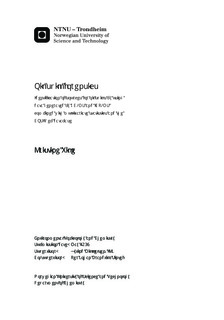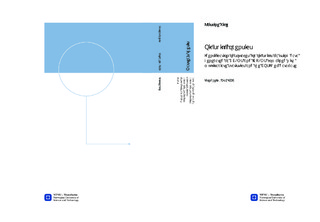| dc.description.abstract | This work has been a preliminary study, aimed at investigating whether or not trace metal Inductively Coupled Plasma-Mass Spectrometry (ICP-MS) analysis could be a viable tool in the oil spill investigation toolbox, after having been abandoned over 20 years ago. The sample material was two previous oil spills, Full City and Server, and various heavily weathered oil samples gathered from islands off the Trøndelag coast. The islands were Kya, Sula, Vesterkalven, Storkalven, Kunna, and the bay Kjervågsundet on the larger island Frøya. The samples were prepared in a laboratory and analysed by Gas Chromatography-Flame Ionization Detector (GC-FID), Gas Chromatography-Mass Spectrometry-Selective Ion Monitoring (GC-MS-SIM) and ICP-MS. Through integration of key elements in the oil, also known as biomarkers, by an online database called COSIWeb, the weathered samples were classified as crude oil , non-NS (North Sea) crude oil , bunker oil , unknown and not oil . This classification was used as a guide to assess the viability of the trace metal analysis done by ICP-MS. The database also provided correlation calculations and five of the weathered bunker oil samples were linked to oils outside the database by probable match . Principal Component Analysis (PCA) was used to investigate the ability each dataset had to classify the different weathered oil types and oil spill samples Full City and Server. Subsequently, Partial Least Squares-Regression (PLS-R) was used to investigate the stability and robustness of both datasets from GC-MS-SIM and ICP-MS together, before Partial Least Squares-Discriminant Analysis (PLS-DA) was applied to investigate if the clusters seen in PCA were significant. By PLS-DA two subgroups of crude oils were identified, possibly related to terrestrial or marine source material in the oil. Of the 46 weathered samples found on various islands, 14 samples were classified as non-NS crude oils, 9 samples were classified as crude oils, 11 samples were classified as bunker oils, 7 samples were classified as unknown oil samples, and 5 samples were classified as not oil. The last group could be oil-like material such as plastic, rubber, coal or other organic material. The most important trace metal ratios identified in this study were ratios which have been previously been singled out as important in oil analysis. These were Ni/V, V/S, U/Pb and Mn/Fe. Other ratios were helpful as well, but these were the most influential ones. The Ni/V ratio was able to separate Full City samples from Server samples without any outliers or fuzzy classification. | nb_NO |

